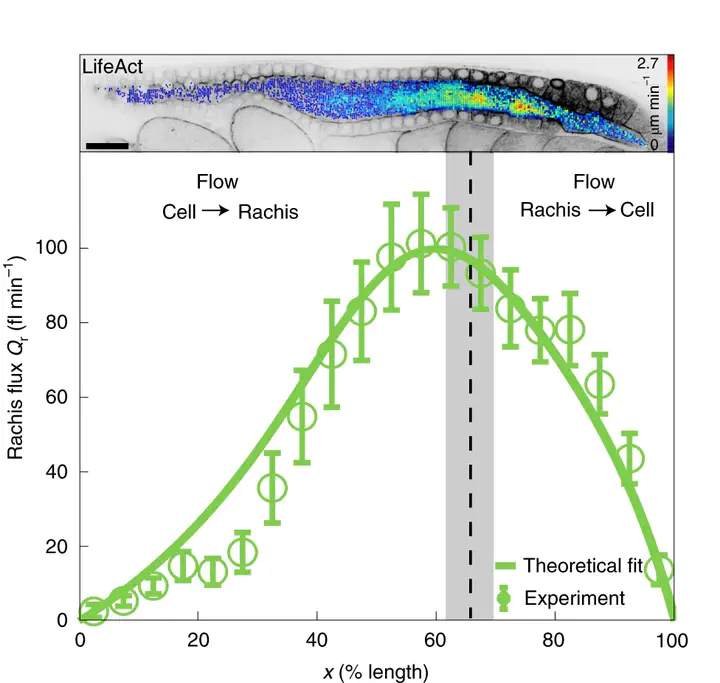
Abstract
Oocytes are large cells that develop into an embryo upon fertilization1. As interconnected germ cells mature into oocytes, some of them grow—typically at the expense of others that undergo cell death. We present evidence that in the nematode Caenorhabditis elegans, this cell-fate decision is mechanical and related to tissue hydraulics. An analysis of germ cell volumes and material fluxes identifies a hydraulic instability that amplifies volume differences and causes some germ cells to grow and others to shrink, a phenomenon that is related to the two-balloon instability5. Shrinking germ cells are extruded and they die, as we demonstrate by artificially reducing germ cell volumes via thermoviscous pumping. Our work reveals a hydraulic symmetry-breaking transition central to the decision between life and death in the nematode germline.